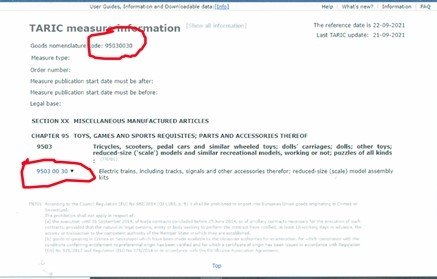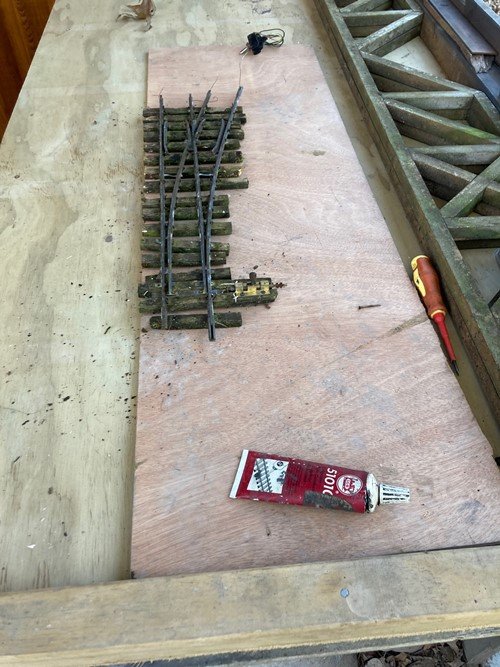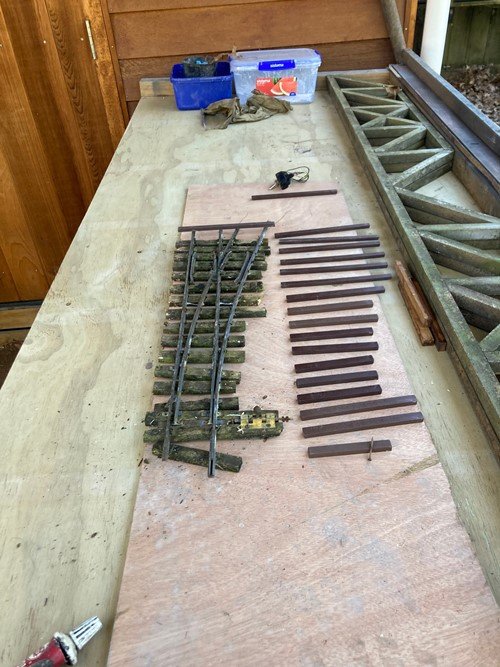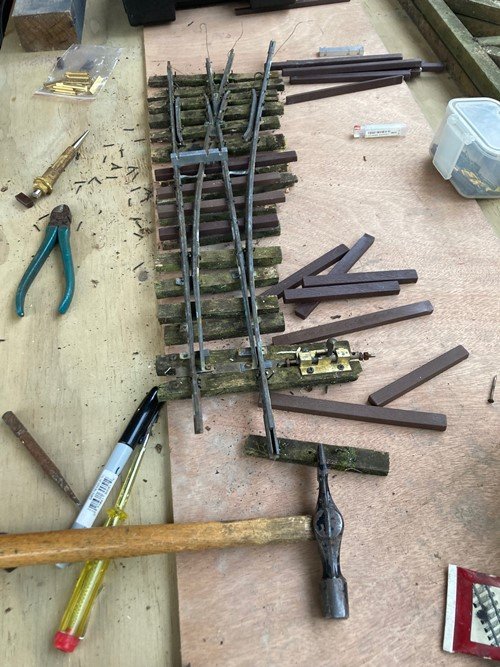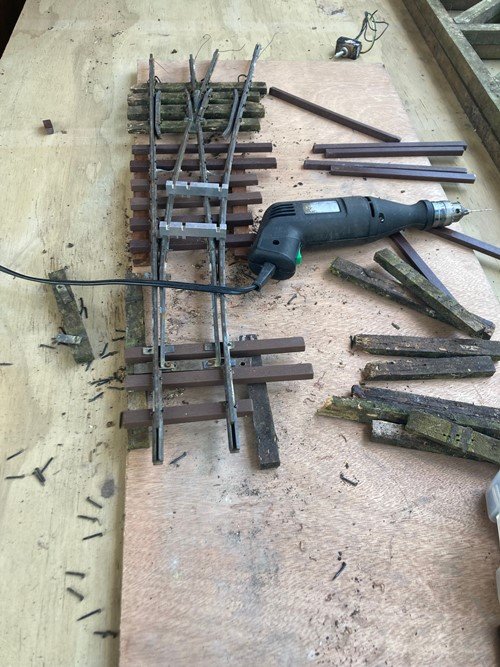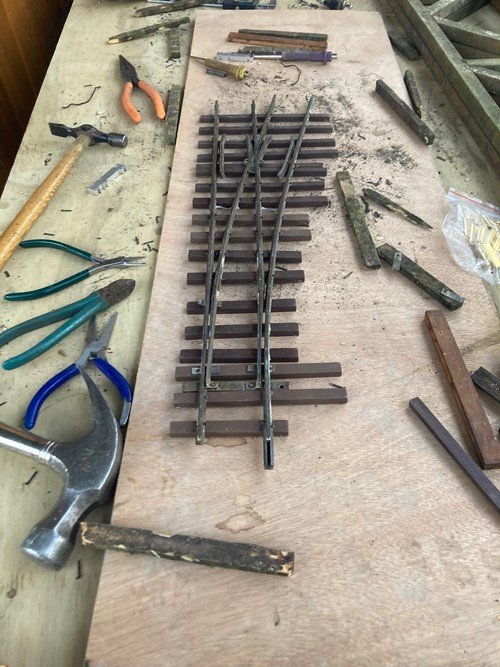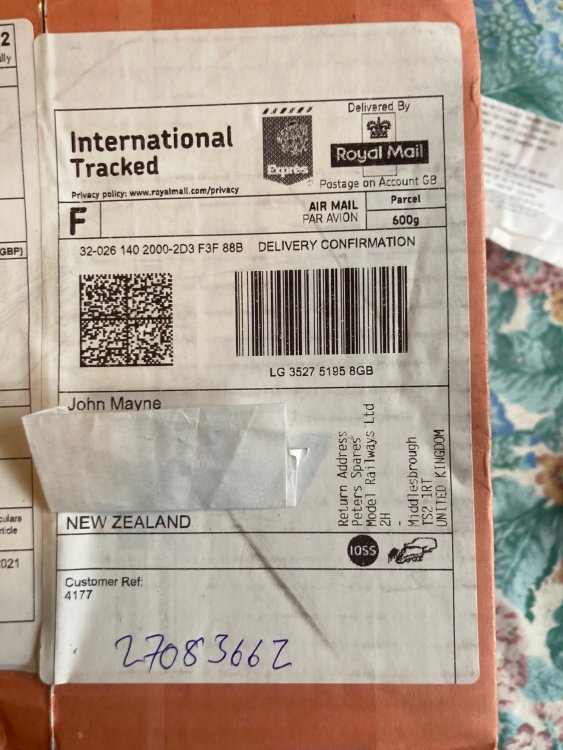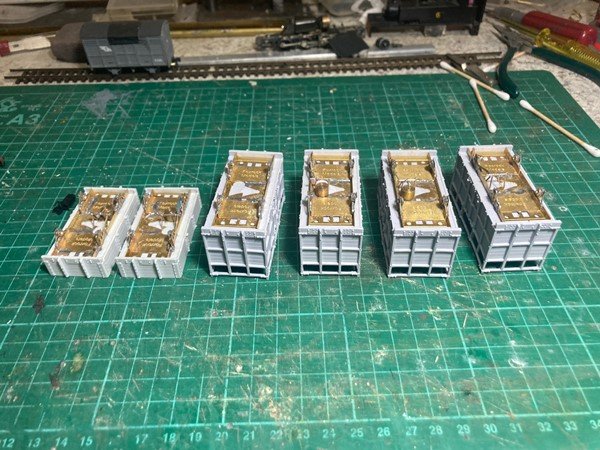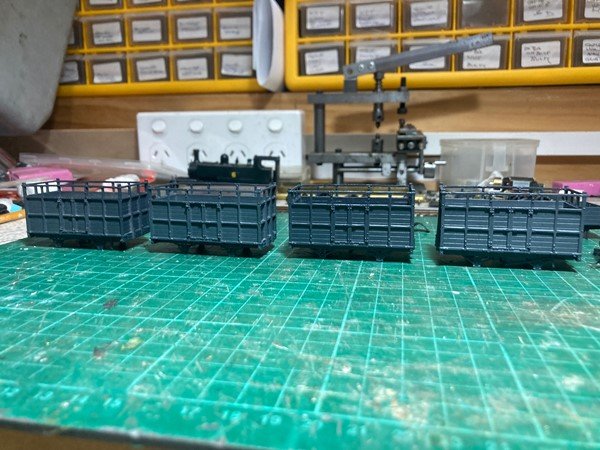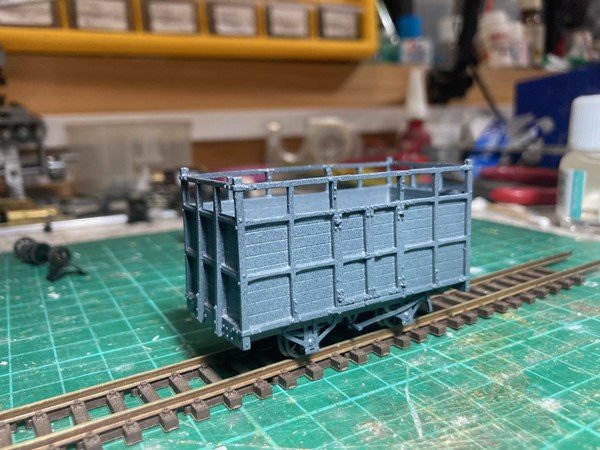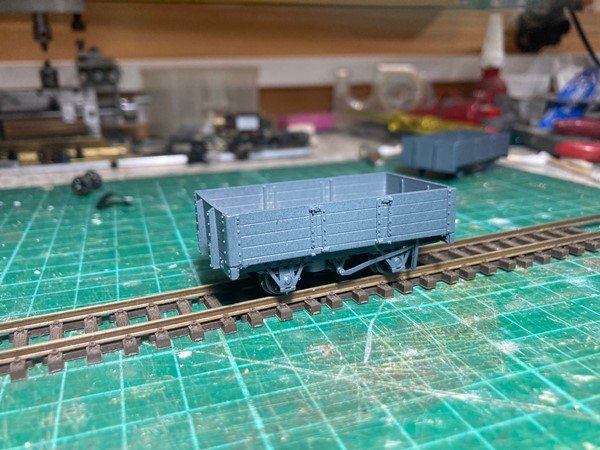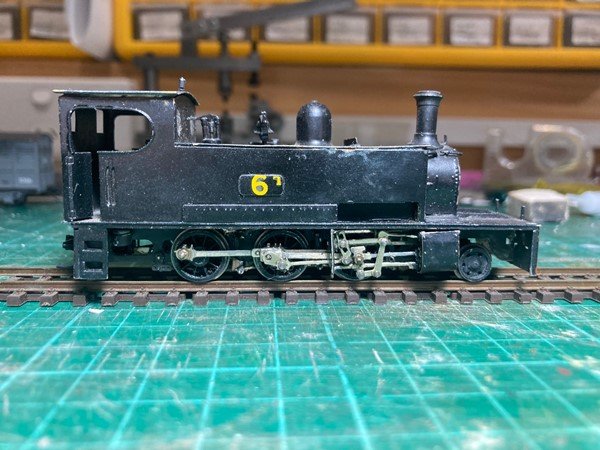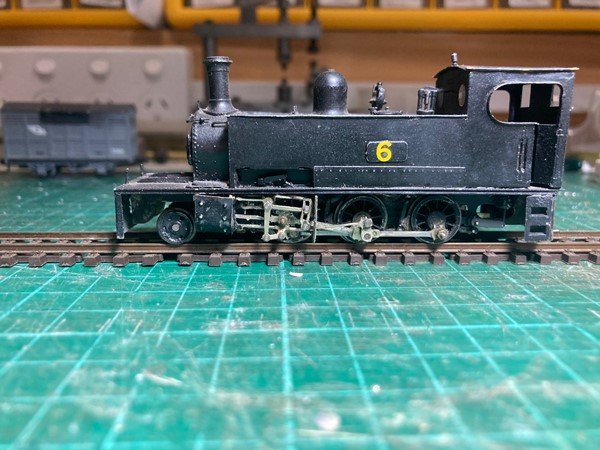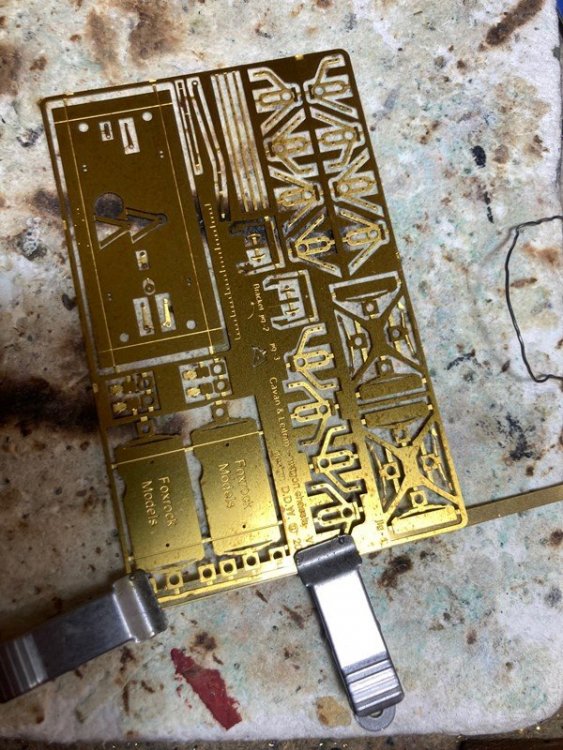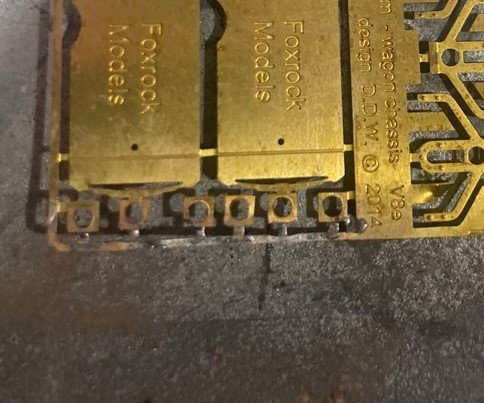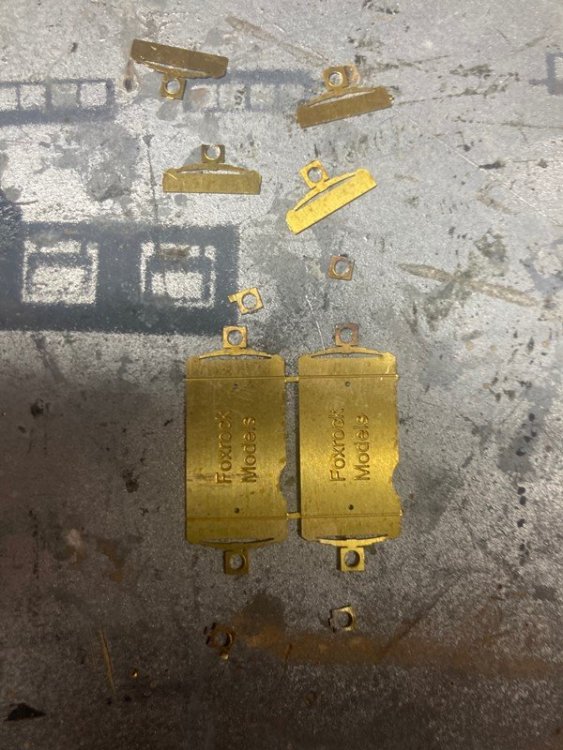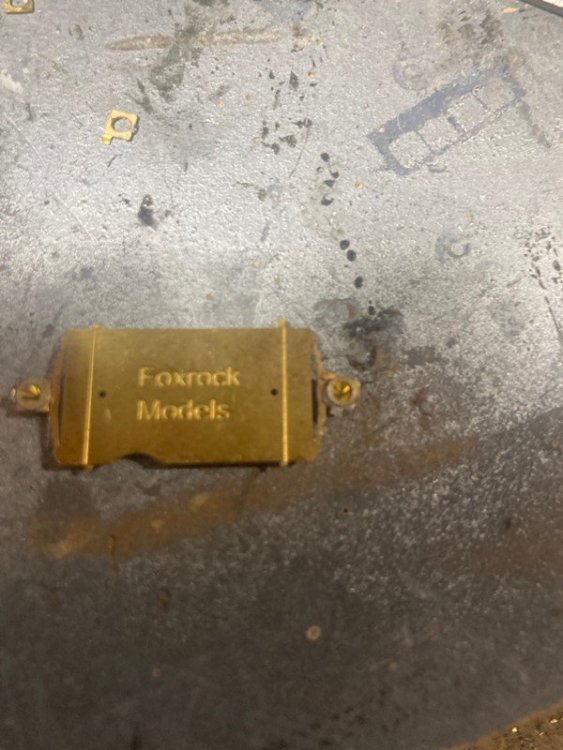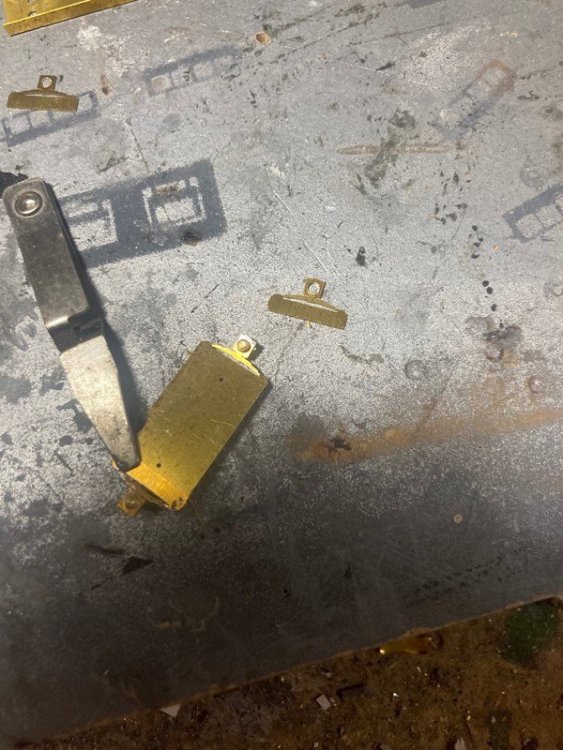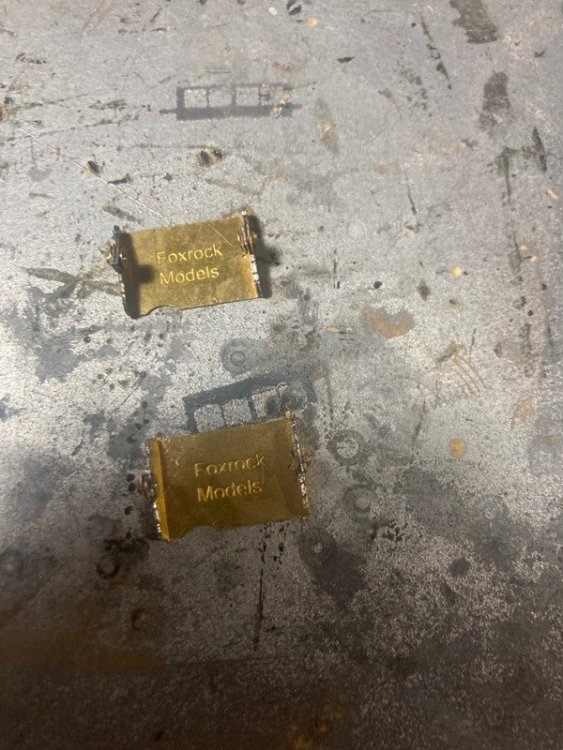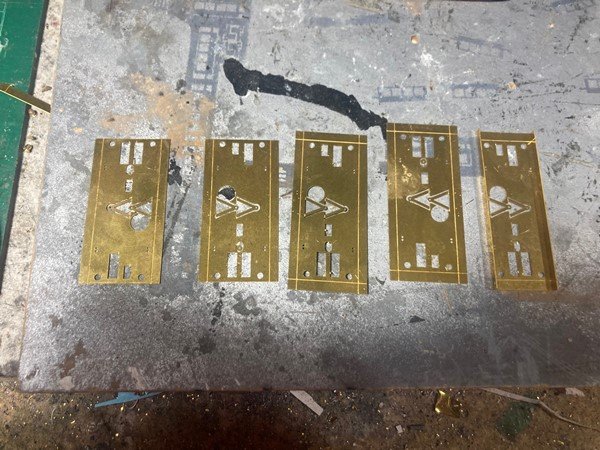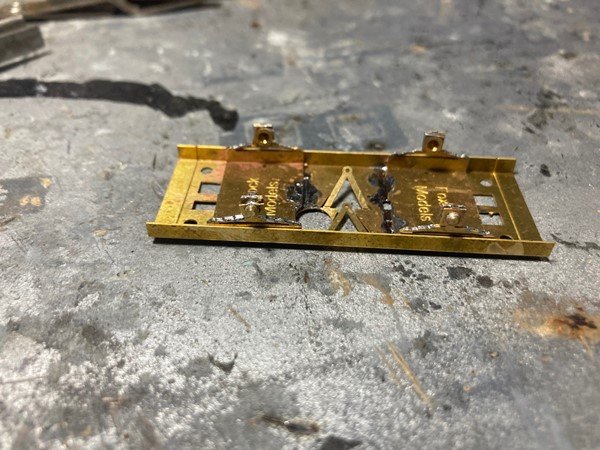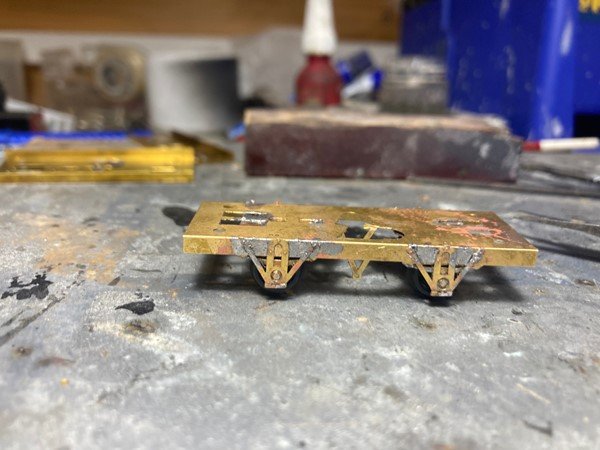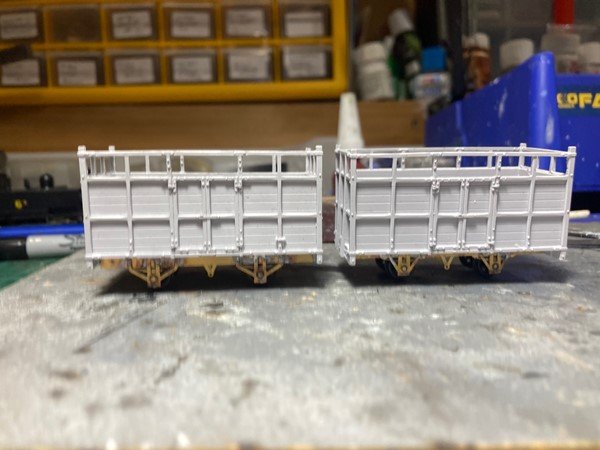-
Posts
4,871 -
Joined
-
Last visited
-
Days Won
119
Content Type
Profiles
Forums
Events
Gallery
Blogs
Store
Community Map
Everything posted by Mayner
-
Recent e-mail from my NZ Post account manager indicates that An Post require a 10 digit TARIC code to clear an Item through Irish Customs, although the EU TARIC look up site shows an 8 digit code The example is a kit that An Post claim was rejected as a result of issues with the electronic customs declaration. "Hi John, We've had feedback on advice for Ireland bound shipments going forward. Please see this below. 1. Descriptions to have spaces between words. '/' is not an ideal word separator. 2. The tariff item to be entered is the 10-digit taric code for EU destined items. For example, 95030030 could be 9503003000 however, to be clear, this is not being provided as tariff advice, it is an example. It is the sender's responsibility for providing the correct taric information. It might be worth raising the issue on an RTE consumer affairs problem especially as its coming up to Christmas. A phone call or programme on gifts from family in the UK and children's toys being delayed because of An Post bureaucracy is certain to stir public interest.
-
They appear to have taken over the Rosslare Express workings from the Woolwich Moguls. The main complaint among drivers was cold feet, the Sulzers were reliable, smooth running, good haulage at slow speed and efficient brakes. They were mainly concentrated on North Wall-Heuston transfer work and Dunlaoire Parcel Trains when I first noticed them in the late 60s early 70s , always seemed to be one waiting at Island Bridge Junction to work a transfer goods when I went by on the No23 bus or one on a parcel train in the old Dunlaoire Station while returning from a seaside outing to Bray. The cabs may have been cramped, but the engine room was surprisingly spacious probably enough room for a Sulzer 8LDA engine used in the BR Sulzer Type 3 Class 33. I sheltered in the engine room of 106 with a group of enthusiasts during a downpour an Inchacore Works visit.
-
I think Neil Ramsey's C&L 4-4-0 is an old Archangel model. John Campbell batch built several classes of live steam Irish Narrow Gauge Locos some of which appear on Neil Ramsey's railway. I had set my heart on a John Campbell T&D 2-6-0T, but he was not prepared to export outside of the UK or Europe.
-
Last weekend was something of a milestone: I had been planning to replace the worksurface of the outdoor work bench/large scale loco maintenance area with a sheet of ply for some time but was delayed when our 25 year old Honda CRV was written off in a crash, getting a replacement vehicle sorting out a roof rack and 2 week Covid lockdown in Aug. I bit the bullet and bought a sheet of ply to protect the garden railway before the tree surgeons arrived to remove a dead tree, trimmed it down and installed the new worktop on Saturday. Its said the larger the scale the nearer it comes to operating and maintaining a full size railway and 1:20.3 scale for modelling 3' narrow gauge on 45mm (Gauge 1) track becomes pretty close with track and trackbed requiring regular maintenance and replacement as parts wear out or decay. I had to replace the ties (American for sleepers) on half of the main circuit and yards after 6-7 years use as a result of UV damage to the original plastic sleepers and a recent inspection indicates that the remainder of the main circuit is due for renewal after 10-11 years use although the original section installed 12 years ago is still good. Fortunately the rails are probably good for another 10-15 years. More pressing the ties and crossing timbers on the turntable/loco yard turnout at the main yard on the outdoor section are becoming over-due for renewal. The turnout was handlaid using yellow cedar timbers as an economy measure compared to buying ready assembled switches, the timbers were milled to match the Accucraft Narrow Gauge track used on the main line which did not match available ready made 1:20.3 switches. This was my first hand laid 1:20.3 switch was becoming increasingly difficult to maintain as the timbers were no longer holding the spikes due to splitting and some of the timbers had started to rot. Replacement timbers laid out beside existing switch I had decided to replace the cedar timbers with Sunset Valley plastic timbers several years ago but had not gotten round to it, being a service track speeds are low and heavy locos usually re-rail themselves without too much fuss. Replacement timbers appear to be a mixture of Sunset Valley Gauge 1 and Narrow Gauge! Replacing timbers between crossing & switch components. Rather than completely dismantling the turnout in order to maintain gauge and the relationship between the switch and crossing components. I drilled out the holes for the spikes with a 1.2mm drill, punched home with a hammer and nail punch. Existing cedar timbers removed in switch and toe area, new headblock timbers fitted. The turnout is resting on packers to allow the spikes to be pushed home as they project through the timbers. The next stage of the assembly is to turn the turnout over bend/clinch the projecting ends of the spikes against the bottom edge of the timber, not the easiest thing to do with blackened steel spikes. I left out the timbers under the switch rails as I need to fabricate and solder new slide chairs/plates in position before installing the timbers. Mock up with crossing and switch timbers fitted. Approx. two afternoon's work to get to this stage a new Narrow Gauge No 4 Switch would cost approx. $100us plus shipping. I usually use No 6 switches for running lines with No 4 switches for secondary trackage or tight spots were a No 6 will not fit
-
"We could not deliver your post. We will try to return it to sender." actually means we got an error message when we attempted to input the electronic customs declaration received from the Royal Mail into the An Post system. "We will try to return to sender" basically means we will return the item (from the Athlone Mail Centre) when we have a truck load of parcels ready to return to the UK. I am planning to follow up with a formal complaint to An Post and follow up with the regulator if we do not get a satisfactory response. I would recommend contacting the Royal Mail rather than An Post if you want to take the matter further. Ask the Royal Mail to investigate the incident asking for an explanation asking why An Post were unable to deliver and request details of the specific issues identified with the electronic customs declaration.
-
David I would not recommend using a resin printer within a living area can produce some nasty fumes. I have mine set up in a shed with an extract system, shed with insulated floor walls ceilings, electrical heating and humidity control. Setting up the first prints (support structure) and identifying a suitable resin especially for 3D wagons or coach chassis can be challenging. Although I have done some 3D CAD work I use a freelance designer for commercial work, the time taken and cost per model has dropped considerably as he gained railway experience and we both developed an understanding of the limitations if what can be achieved in terms of railway models. It might be worth while thinking of designing a 7mm or larger scale 3D coach or wagon with separate sides, ends, roof and underframe to assemble as opposed to a one piece model. simpler to design, a higher standard of finish, easier to support and clean up before assembly. One piece models tend to have one good or two good sides with sharp detail, the opposite sides with loss of detail due to lower resolution and removal of temporary supports. Ken. That passenger brake exudes character, great to see such distinctive models from such a neglected railway! That
-
Excellent work! I tried to persuade Pete Parlin to produce a batch of Backwoods miniatures C&L wagon chassis etches to go with my resin cast wagon bodies without success. The thought of 4T etches and 3D printed C&L wagon bodies is very tempting, but its probably time to move up to a larger scale especially if the Accuracraft Live Steam Kathleen I ordered in 2019 ever materialises. https://www.accucraft.uk.com/products/kathleen-lady-edith-cavan-leitrim-4-4-0t/ I don't really have room for additional stock on my current Irish 3' layout and assembling small scale chassis is becoming a struggle with my clunky fingers, shaky hands and failing eyesight.
-
I was recently in contact with Customs and received some useful feedback from An Post in response to problems we experienced shipping goods to Ireland Customs were very helpful and clearly explained the roles and responsibilities to the two organisations, in contrast getting an explanation for the delays from An Post was like pulling teeth. An Post initially providing stock answers that there was a problem with the declarations but failing to provide specific details when requested. Customs explained that An Post is responsible for entering customs data and collecting vat and duties due on behalf of the Revenue, but also responsible for contacting the sender or person receiving the package to make any necessary amendments if there is a problem with the electronic customs declaration transmitted by the sending postal authority to An Post. Customs only become involved when its necessary to open a parcel for examination, presumably when the Customs dogs sniff something suspicious or something on the declaration is flagged. Parcels are cleared by inputting the electronic customs declaration into the Irish Customs system rather than a person reading or a robot scanning the label on the box. Feedback from An Post indicates that the An Post/Irish Customs IT system is very sensitive and that An Post staff are unable/not allowed to correct or amend a defective declaration. Interestingly while there is an EU requirement to enter TARIC codes in a 10 digit format, 8 digit codes are displayed on the EU TARIC Information site. Going back to the DTDP and IOSS, it may be cheaper for an Irish customer to purchase from an overseas supplier that is not a member of the IOSS (under €150) or offer a DTDP (over €150) service and pay the VAT and An Post fee on delivery. As Dive Controller alluded to there are hidden costs to these schemes, an overseas retailer has to appoint an Irish or EU customs agent or intermediary as a middle man to send monthly returns to the Irish Customs despite being registered for Irish Vat and paying vat direct to the revenue the same as an Irish based business, there are considerable hidden costs providing a DTDP (Delivery Tax and Duty Paid) which make it only viable for large high value shipments to Ireland.
-
-
For someone with the space a layout based on Clones in its original or "what if" form would make an excellent operating model with short relatively frequent trains arriving and departing in four different directions, a large loco depot and two goods yards. The GNR operated Clones-Cavan as an extension of the original Ulster Railway main line with four Belfast-Cavan trains made up of modern stock daily, the Irish North appears to have been more secondary main line in nature with a small number of Dundalk-Derry trains intermixed with through Belfast-Enniskillen via Clones & Omagh trains, Enniskillen-Omagh and Enniskillen-Bundoran trains. Diesel units would be a no-brainer for operating a fast Belfast-Cavan-Enniskillen service made up of AEC/BUT, MPD, 70, 80 or CAF units splitting and combining at Clones, with IE eventually replacing B141+2 Bredin/Park Royal/Craven+van with 2 Car 2600 sets for a once/twice daily Dundalk-Clones possibly Bundoran service. Again NIR could simply operate Enniskillen-Omagh as a feeder to the Derry Road with a captive 2 car railcar set or operate a Belfast-Derry-Enniskillen railcar service splitting at Omagh similar to the GNR during the final weeks of the Irish North line. Its just about possible that CIE/IE could have continued freight services to Clones as a railhead for Cavan and Monaghan into the 90s to serve the large meat and dairy processing plants in Counties Cavan and Monaghan, export meat and dairy products going out in ISO containers same as Claremorris, Mallow and Rathluric during the same era.
-

Type of wagon used on the Foynes Ballybrophy line
Mayner replied to Wexford70's topic in General Chat
The Zinc ore wagons were 20T w wheel wagons, there is a photo in the NLI collection showing one of these wagons with a tarpaulin. http://catalogue.nli.ie/Collection/vtls000148612 The rotary tippler may have been re-located to the Limerick Cement factory for unloading the much larger Shale Wagons, the wagon release arrangement were similar. -
I remember herds of cattle being driven down the North Circular Road from the Cattle Market to the Docks during the late 60s early 70s. Although we lived on the Southside I knew the area fairly well as a child and as a teenager My mother's family was from Phibsboro, her sister's family lived in the Artisans Dwellings near the Market and a Great Aunt lived in Ballybough her landlady's husband was a cattle drover. My father had a story of a bull breaking loose and causing havoc near the Five Lamps during the early 60s. It looks like there was a serious proposal to re-locate the market to the North Wall during the early 1930s with the LMS offering to build a covered cattle market and lairage in the Holyhead Yard. The main motivation appears to be that the cattle would be exported in better condition by being fed and rested having been railed directly to the port, than driven from Cabra Bank or Liffey Junction to the Market then driven the two miles to the port. https://www.oireachtas.ie/en/debates/debate/seanad/1932-05-04/8/. The LMS would of course ship the cattle to Holyhead with the nice long rail journey on the other side!
-

Type of wagon used on the Foynes Ballybrophy line
Mayner replied to Wexford70's topic in General Chat
There were Zinc (Mogul) and Barytes mining operations at Silvermines that used different types of wagon. The train in the photo appears to be made up of Barytes wagons which were basically dropside wagons, Zinc was transported in open tippler wagons which were discharged through a rotary tippler at Foynes. There are photos of the both types of wagons at Foynes in the O'Dea collection http://catalogue.nli.ie/Collection/vtls000148612 -
Internationally a number of freight companies are using rail to transport freight between major hubs. In Hamilton (pop. 165k) we currently have two rail served transport hubs serving logistics companies and a further two at development stage on the periphery of the city. While the smaller vans used on post and courier work)are likely to be replaced in the not to distant future by electric vehicles, HGVs will still be required for delivery and collections to and from larger supermarkets, retail parks and industrial sites. Most of the vans and trucks are owned or leased by 'owner drivers" on contract these companies. Although our population density is low compared to European or UK standards, rail has an advantage in New Zealand in terms of longer distances between major centers and an economy that based on producing and processing heavy bulky products as opposed to financial services and IT.
-
I have used battery power for about 10 years Phoenix Sound systems http://www.phoenixsound.com/ DCC is a bit too namby pamby for large or 1:1 scale operations. In a way things are coming full circle from the 1920s and 30s with the development of battery locos in the United States and the Drumm Train train in Ireland. Short battery life and higher capital cost compared with diesel railcars killed off the Drumm Train, New Zealand railways fitted its battery electric shunting locos with Gensets when the batteries required replacement in the 1950s
-
Its possible there is an IOSS logo on all Royal Mail international postal labels regardless of destination. It looks like the Royal Mail is treating IOSS as an opportunity to make money as opposed to a problem. https://www.royalmail.com/business/international/guide/delivered-duties-paid-ioss
-

Ernies Massive Irish 1930's to 2005 Photo Archive
Mayner replied to Glenderg's topic in Photos & Videos of the Prototype
329 was a member of the 321 or D2 Class the largest express passenger 4-4-0s used by CIE. The class were basically re-built as new locomotives in the 1920s with new frames, boilers and contemporary styling, the modern looking tender was originally built to run with the 342 or D4 Class mixed traffic 4-4-0 locos introduced during the late 1930s Inchacores last class of 4-4-0 locomotives. The van on the left looks like an ex MGWR "Butter Wagon", MGWR wagon and non-passenger stock wer3e fitted with distinctive knuckle hinges. -
Funnily enough supplies have began to trickle through from the UK, a package arrived this afternoon with an IOSS logo on the declaration. All international parcels are now cleared using electronic customs declarations transmitted by the sending postal authority rather than a person reading the label on the box. It looks like the Royal Mail system is capable of transmitting IOSS data to EU postal authorities.
-
Little positive news to report this month as a result of a combination of Covid restriction here in New Zealand and continuing difficulty obtaining components and parts from suppliers in Europe and the Far East. RTR Wagons Brake Vans: I am currently focusing on completing current orders of 23580 Light Grey and 23544 Brown 20 T Goods Brake vans for potential delivery late 2021. We were unable to progress the models as planned following our August update as all our local suppliers were closed as a result of Covid restrictions. Other existing and planned wagon projects: We are currently unable to progress other existing and planned projects as our preferred 3D print suppliers and print bureau are closed as a result of on-going Covid restrictions in Auckland 52 Class Locomotive kits: The majority of kits have now been delivered to customers with some very positive feedback. CIE 4w Van kits: I am unable to provide an estimated dispatch date at this stage for these kits as I am currently awaiting components and parts to arrive from suppliers.
-
A multi purpose Railway Crane a complete reversal from IE recent practice of hiring mobile cranes for recovery and Hi-Rail excavators for p.w. work. https://www.kirow.de/typo3temp/cokcb2web/files/ee0d10fd6f03cc58b239cac7c8f13b38/MULTI_TASKER_EN.pdf
-
I fitted the brake levers and vacuum cylinders to the wagons but gave up on the brake hangers, shoes and linkages as they were a bit too fiddly for my eyesight and fingers to assemble. Chassis superglued to bodies, I even mislaid a couple of vac cylinders which might turn up some day. Cut of cattle wagons in grey etched primer. I first sprayed the wagons with an "Adhesion Promoter" (automotive wax and grease remover) before spraying with primer, this minimises the risk of paint flaking off both the brass and resin substrate. 3/4 view of cattle wagon, I still have to fit the axlebox covers! Standard small C&L open wagon, this wagon appears to be base on the original Metropolitan 40--5Ton wagons introduced for the opening of the line in 1887, the C&L appear to have added an additional 18 wagons---6T wagons before the large scale introduction of 'foreign' open wagons by the GSR & CIE to cater for the increasing coal traffic from the mid 1930s to the late 1950s. 6Ts re-assembly, cylinder covers replaced, coupler mounting plates fitted to the chassis fore and aft and chipped/damaged paintwork treated with Carrs Metal Surface Conditioner and Metal Black, the loco body needs to be washed to remove dirt and chemical residue. I am un-decided whether to simply touch up the chipped worn areas or try a light coat of my new weathered black mix which I use for wagon roofs. Colour photos indicate that 6T was painted black before she arrived on the C&L in the Spring 1957 and appears to have remained in reasonable condition while working in the railway.
-
My New Irish Lines article on assembling Worsley Works Laminates and Park Royal coaches is available on the Worsley Works Website http://www.worsleyworks.co.uk/NG/NG_NIL_Art1.htm The Irish broad gauge coach roofs is the tricky bit at the time I used Comet BR coach roofs cut down the middle filling the resulting gap with isopon and a lot of filling and sanding. Popeyes plasticard or ECMs formed brass roofs are much much neater solutions another alternative is to carve the roof from balsa with doped aircraft tissue roof surface which I used on a pair of Worsley Works AEC railcars
-
I think the chance of a postal worker looking for an individual parcel and reading the label in a modern mail center is pretty slim, the An Post parcel scanning and customs clearance system appears to be automated with minimal human intervention. Its possible the Universal Translator may not have been working when NZ Post transmitted the electronic custom declarations for the shipment to An Post at least a week before the shipment arrived in Ireland Most of the Irish shipment of loco kits disappeared into the An Post system for 4 weeks before re-emerging in another mail center marked unable to deliver return to sender. Follow up with NZ Post found that An Post got an error message when they attempted to input the electronic customs declarations transmitted by NZ Post. Fortunately most of the kits were delivered to our Irish customers late last week but one remains in limbo in the An Post system. I don't know whether the kits were delivered as a result of pressure from NZ Post or someone in An Post simply read the labels and put the parcels out for delivery rather than into a shipment to Dublin Airport. I suspect the last parcel will remain in the system until they enough "returns" to make up a truck load to the Airport We are getting lots of (written) assurances from NZ Post that this won't happen again, but we have alternative shipper if the problem re-occurs.
-
An Post customs declaration and clearance process appears to be at least partially automated, An Post are responsible for customs clearance and collecting vat Customs only become involved when its deemed necessary to open a parcel to examine its contents. The system is likely to be set up to collect vat on a % of parcels rather than all parcels going through the system otherwise the whole system would grind to a standstill if An Post attempted to collect vat on every parcel. I am having an interesting time at the moment trying to clear a shipment of kits through the An Post system. Apparently An Post were unable to read electronic customs declarations transmitted by NZ Post and are either unable or unwilling to attempt to enter the data manually by reading the customs declaration on the labels.
-
So to the wagon chassis assembly: The chassis kit is designed to capture detail variation that existed between individual C&L wagons and wagon types during the railways history, including variations in wheelbase and ironwork. The first job was to solder a reinforcing strip along one edge of the fret, as recommended in the instructions. The strip minimise distortion while opening out bearing holes & packing pieces(with a tapered to broach) to clear top hat axle bushes. I used a strip of scrap brass, soldering clamps are by Micro Mark. I use phosphoric acid flux (Ranex Rustbuster diluted with distilled water https://www.bondall.com/ranex-rustbuster/ not sure if anything similar is available in Ireland or UK) with DCC Concepts 145° solder. The solder basically runs into the joint by capillary action avoiding blobs of excess solder. Bearing holes opened out and reinforcing strip removed The next stage of the assembly involves assembling a number of small parts. The square washers are packing pieces which fit on the inside of the (not quite) W iron assembly, the packers with spring attached fit on the outside of the W iron assembly I found the simplest way to assemble the units was to solder the bearings and packing pieces to the W irons before folding the units into a U shape. This was easy to do with the fold lines facing down and the bearings facing up, a hot iron flux and minimum solder on the tip of the iron. I then soldered the 2nd layer of the spring/w iron in place. Folded W irons waiting to be soldered to the chassis The chassis is designed for the longer cattle wagons and short opens. Shortened by breaking off at the half etched lines and the solebars by folding. The "W irons" fit between the solebars, the holes in the w irons align with holes in the chassis and can be set up for a 7' or 7'6" wheelbase. I omitted an additional spring axlebox layer which fits below the solebar. The main reason for the complexity. On the Cavan & Leitrim and the majority of Ulster's railways (broad and narrow) wagon the Axleguards were bolted to the outside of the solebars with axleboxes and springs on the inside unlike the "Southern" Companies and the GNR The kit includes 3 alternate sets of cosmetic axleguards to cover the more common variations between C&L Wagons Cosmetic axleguards soldered in place. I will remove excess solder with a fibreglass brush before painting, in this case solder acts mainly as a key for paint. The kit includes axlebox covers and brake gear, but that's another days work! One that I assembled earlier for comparison, I did not realise I used different axleguards on the wagon on the left. The standard of detail, pattern making and casting of the wagon bodies are exceptional for a resin cast model. The resin is quite flexible and delicate parts unlikely to break off during normal handling and use. The C&L had a small fleet of cattle wagons 81-100 that could carry 10 2 year old cattle one more than most contemporary Broad Gauge wagons (13'6"-14') because of their greater length. Wheels are from my surplus stock and may require replacement its difficult to maintain a consistent back to back gauge as they tend to slip on their axles (even with Locktite) I will probably use these wagons for Fair Specials as there is a photo of a train of these wagons is CIE days, 4 and a van is a bit short, 5 and a van just about fits in the fiddle yard.
.png.c363cdf5c3fb7955cd92a55eb6dbbae0.png)


